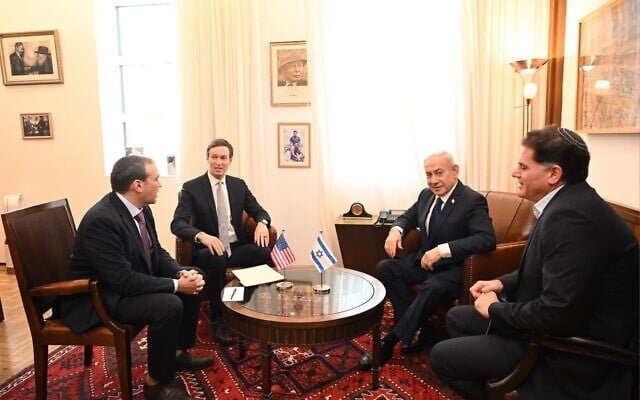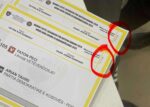Israeli Prime Minister Benjamin Netanyahu met on Monday with White House Senior Advisor Jared Kushner in Jerusalem to discuss the second phase of the Gaza peace plan proposed by U.S. President Donald Trump.
According to an Israeli government spokesperson, the meeting focused on efforts to enforce a ceasefire in Gaza, recover the bodies of Israeli hostages killed by Hamas, and outline a roadmap for Gaza’s demilitarization.
Also present were Israeli Minister Ron Dermer and U.S. advisor Aryeh Lightstone, both key figures in the Israeli-American coordination on Gaza’s future.
Washington Pushes for Safe Surrender of Hamas Fighters
The talks come as the U.S. and Israel weigh the fate of between 100 and 200 Hamas militants believed to be hiding in tunnels beneath Rafah.
Washington is reportedly pressing Israel to allow the fighters to surrender their weapons in exchange for safe passage, though Israel has yet to issue a definitive response.
The discussions gained new urgency following the return of the body of Israeli officer Hadar Goldin, who had been held by Hamas since 2014. The recovery of his remains is believed to have been part of a wider negotiation effort involving Turkey as a mediator, although Ankara’s demands reportedly stalled progress.
A Palestinian source claimed that Turkey, with U.S. backing, continues to work toward securing the release of the remaining hostage bodies still held by Hamas.
Netanyahu: “Ceasefire Will Be Enforced with an Iron Fist”
Addressing the Knesset, Netanyahu declared that Israel will enforce ceasefires in both Gaza and Lebanon “with an iron fist.”
He reaffirmed that “the war is not over” and vowed that Hamas will be disarmed and Gaza demilitarized, echoing his long-standing position that security comes before diplomacy.
Meanwhile, U.S. envoy David Witkoff described the Rafah tunnel operation as a “pilot project” for Hamas disarmament, adding that Washington is exploring third-country options for relocating surrendered fighters — though no host country has yet agreed to participate.
Regional Players Hesitant on U.S.-Led Stabilization Force
The plan’s next stage includes the potential deployment of an International Stabilization Force in Gaza, a move that Washington hopes to formalize through a U.N. Security Council resolution.
However, regional reactions have been mixed.
The United Arab Emirates stated it will not participate without a clearly defined mandate, while Azerbaijan publicly ruled out sending troops until full hostilities cease.
Trump has claimed that “several nations are ready to contribute forces”, yet Arab diplomats have denied any such commitments, reflecting deep skepticism toward the plan’s feasibility and motives.
Critics Warn of Strategic Overreach
Analysts argue that both Netanyahu and Trump are pursuing politically motivated goals under the guise of “peace efforts.”
Netanyahu seeks to reassert control and project strength after months of domestic unrest, while Trump aims to present a foreign policy victory ahead of a volatile election cycle.
The inclusion of Kushner — a key architect of Trump’s previous Middle East policies — suggests that Washington’s approach remains heavily driven by personal networks rather than multilateral diplomacy.
Meanwhile, the humanitarian crisis in Gaza continues, and no clear framework exists for reconstruction, governance, or long-term peace.







